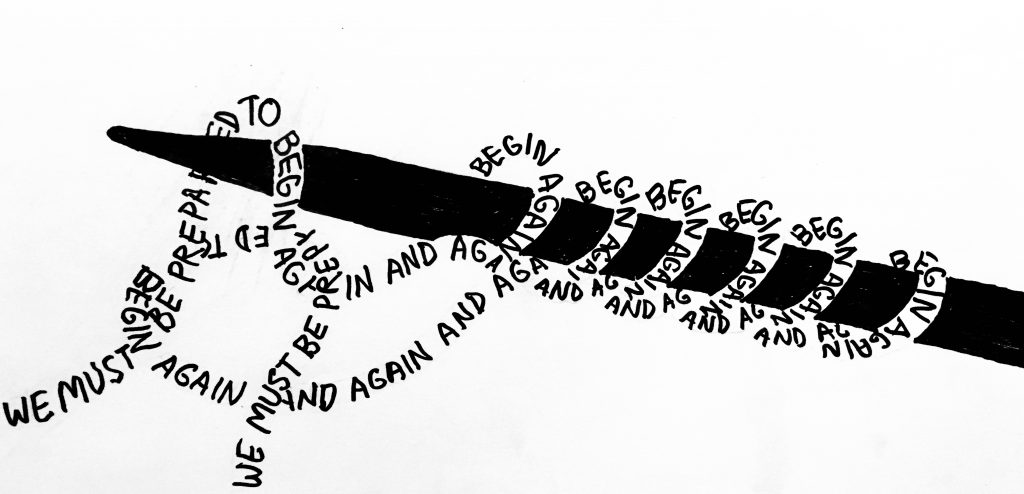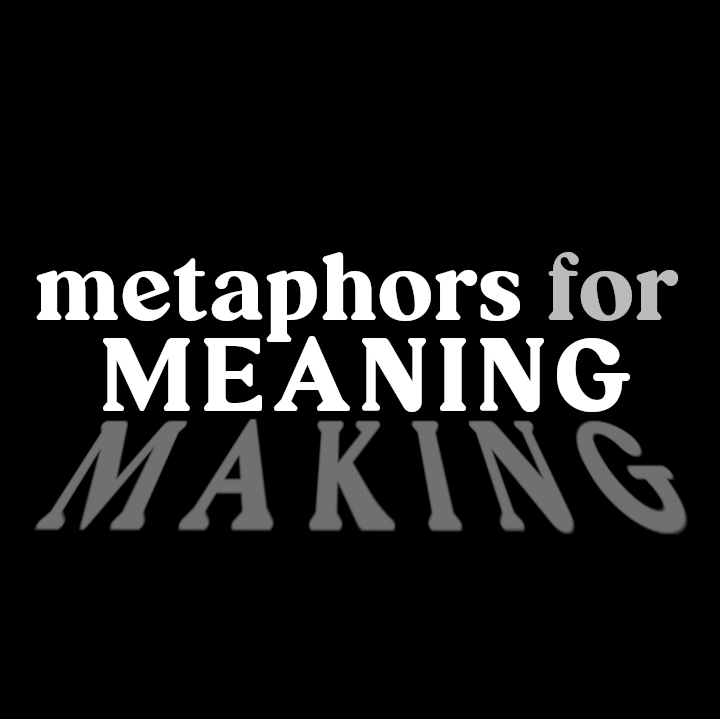Part of the Crafting a Better World series
Hello! We’re still in a pandemic here,
so stay home and CAST ON!
When you start a knitting project, you have to cast stitches onto your needle. There are many ways to cast on, no one way is really the only, best “right” one (despite what some perfectionist crafters might tell you).
The first cast on I learned was the Reverse Loop Cast On. You just twist loops onto your needle. It’s easy to explain and do, but it honestly really kind of sucks. Your next row of stitches are harder to knit into because the loops are really awkward. And they can easily fall off your needle which isn’t great when you’re starting out. And they don’t really make a very strong or attractive cast on edge.
But you have to start somewhere.
And sometimes you just need to jump into the work and get to the deep end as soon as possible. So often our “cast on” –our beginning–is stumbly. We say the wrong thing and offend someone. We want to get it right. But sometimes you just got to start. Cause we may never really get it “right.” Especially the first time. So show up. Be present. Listen. Pay attention. Your “cast on” may be awkward, but if you don’t get some stitches on your needle to begin with, you can’t get going with your knitting. If we don’t first show up–to a relationship, our community, a struggle, the work–we’ll never get going. We’ll never be present to be a partner in the work, let alone be present so we can learn how to show up better the next time.
But sometimes you want to skill up and be more methodical. The cast on we like to teach new knitters is the knitted cast on. It’s slow. You knit into your first slip knot loop and then bring that up onto the needle. Then you knit into that stitch and bring another stitch up onto the needle. Stitch after stitch. Until you have the needle full that you need. It’s slow, but it reinforces the actions of knitting itself (except the last step). And it creates a firmer edge.
Sometimes you need to take your time, be patient, slow and methodical. And showing up–to a relationship, our community, a struggle, the work--can sometimes be about just listening and paying attention and NOT trying to show up with the answers. Meaningful systems change takes time.
Then there’s the long tail cast on. This is my favorite one because it’s fast and creates the nicest edge, but it’s really hard to teach. The first time I saw someone doing it I freaked out. What the hell was that? All those finger, yarn motions? I couldn’t track it. So it scared me and I pushed it away. When I finally sat down to learn it, though, it wasn’t that freaky. But it’s one of those things that no one can really tell you how to do. You have to watch it and practice it and have it become rote in your muscles. It’s very easy for me to do now, but still hard to teach. This is very similar to resiliency itself.
The long tail cast on also has the added frustration of needing to have two lengths of yarn and having to guess about how much yarn you’ll need for the cast on. I get around this by using two ends of the ball of yarn or a 2nd ball of yarn so I don’t have to guess. A simple solution, but of course it took a while to figure that out. But luckily I craft in community and someone else shared this tip with me.
We learn from each other. It’s how some of us know how to knit to begin with. Someone figured out how to make stuff with sticks and yarn and they didn’t keep it to themselves. They taught someone else. And so on and so on. There’s always more to learn.
Each cast on method has different strengths: firmer, stretchier, more decorative. It takes a while to learn different methods. And it’s good to be willing to learn them; different situations call for different skills, different ways of being and listening. But first you have to learn the basics. Casting on–beginning–takes time and sometimes has to be done over again multiple times. We must be prepared to begin again and again if we truly want to craft a better world for all.

Going Further: Ideas for Exploring/Sharing this Video
To more personalize this video within your community/faith/group context, you might want to explore some of these questions (with your group or to inspire other aspects of your activity/program/gathering):
- When you think about whatever kinds of crafts you do, what are some of the different ways you can “begin”? Do you start with a list? Do you first gather all your tools or other materials?
- When you think about how you “cast on” or “begin” your craft, what comparisons can you make to how you approach other kinds of beginnings? (a new relationship, showing up at meeting, joining a new group, approaching an issue)
- Elizabeth talked about being “freaked out” by the complicated long tail cast on. How she pushed it away at first, but then when she sat down to learn it, found that it wasn’t as strange or complicated as she thought. Does this remind you of an experience or situation where a new idea you were confronted with was challenging and you found yourself pushing it away? Why do you think we do that? How can we help ourselves–and others–be less afraid of change?
- What about this comparison is meaningful? what not?

